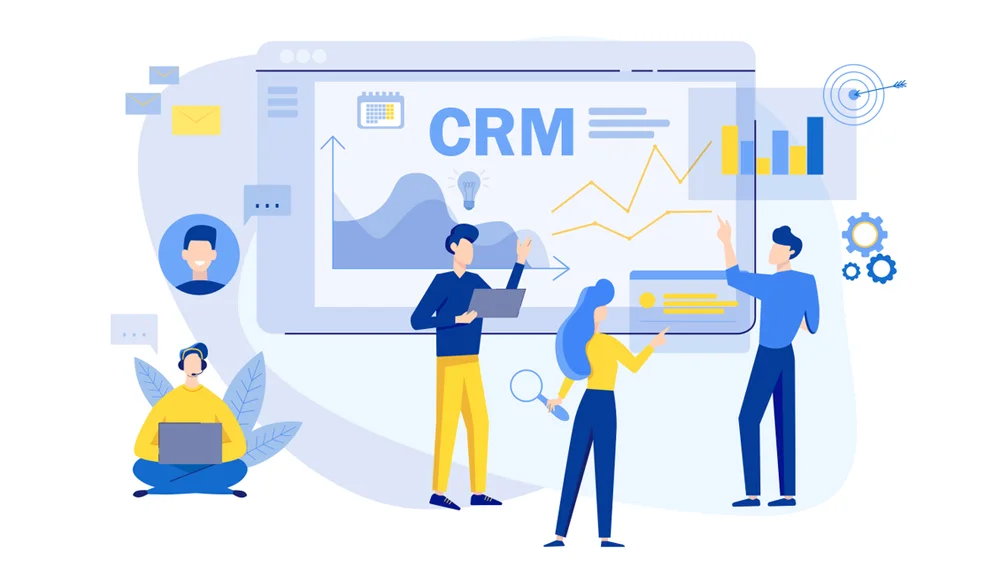Enterprise applications are crucial tools that help businesses streamline operations, enhance efficiency, and improve customer experiences. In this blog, we will explore what enterprise applications are, their key features, and their importance in business operations. We will also look into the benefits these applications provide, such as improved productivity, better data management, and cost savings. Additionally, we will highlight 15 examples of enterprise applications, detailing their functionalities and advantages for businesses.
What Is an Enterprise Application?
Enterprise applications are software solutions designed to integrate and manage core business processes across an organization. These applications support various functions, including customer relationship management, resource planning, and supply chain management.
Key Characteristics and Features:
- Scalability to support growing business needs
- Integration capabilities with other systems
- Robust security measures
- Real-time data processing and analytics
- Customizability to fit specific business requirements
Importance in Business Operations:
Enterprise applications are vital for streamlining complex business processes, ensuring seamless data flow, and improving overall operational efficiency. They enable organizations to make data-driven decisions, enhance customer relationships, and maintain a competitive edge in the market.
Benefits of Enterprise Applications
- Improved Efficiency and Productivity: Automate repetitive tasks and streamline workflows.
- Enhanced Data Management and Analytics: Centralize data storage and provide powerful analytics tools.
- Streamlined Business Processes: Integrate various business functions for smooth operations.
- Better Customer Relationships and Experiences: Offer personalized interactions and efficient support.
- Scalability and Flexibility: Adapt to changing business needs and scale operations.
- Cost Savings and Improved ROI: Optimize resource utilization and reduce operational costs.
Examples of Enterprise Applications: Example 1: Customer Relationship Management (CRM) Systems
What is a CRM system? A CRM system is a tool designed to manage a company’s interactions with current and potential customers. It helps businesses streamline processes, improve customer service, and increase profitability. For businesses looking to enhance their online presence and customer engagement, working with a web design company in Houston can be a strategic move. These companies not only provide excellent web design services but can also integrate CRM systems seamlessly into your website, ensuring a cohesive and efficient customer management approach.
Benefits:
- Improved customer relationships
- Enhanced sales and marketing strategies
Example:
- Salesforce
- Microsoft Dynamics 365
Examples of Enterprise Applications: Example 2: Enterprise Resource Planning (ERP) Systems
What is an ERP system? An ERP system integrates various business processes, including finance, HR, and supply chain, into a single unified system.
Benefits:
- Integrated business processes
- Real-time data access
Example:
- SAP
- Oracle ERP Cloud
Examples of Enterprise Applications: Example 3: Human Resource Management Systems (HRMS)
What is an HRMS? An HRMS is a software application that manages HR functions such as recruitment, payroll, and performance management.
Benefits:
- Streamlined HR processes
- Improved employee management
Example:
- Workday
- BambooHR
Examples of Enterprise Applications: Example 4: Supply Chain Management (SCM) Systems
What is an SCM system? An SCM system manages the flow of goods, information, and finances related to a product or service from the procurement of raw materials to the delivery of the product to the end user.
Benefits:
- Enhanced supply chain visibility
- Optimized logistics
Example:
- SAP SCM
- Oracle SCM Cloud
Example 5: Business Intelligence (BI) Tools
What are BI tools? BI tools are software applications used to analyze an organization’s raw data. These tools provide insights that help in making informed business decisions.
Benefits:
- Data-driven decision making
- Improved business insights
Example:
- Tableau
- Power BI
Example 6: Enterprise Content Management (ECM) Systems
What is an ECM system? An Enterprise Content Management (ECM) system is software that manages an organization’s documents and other content. It ensures that information is easily accessible, stored securely, and systematically organized.
Benefits:
- Efficient document management
- Secure content storage
Example:
- SharePoint: A Microsoft product that provides a web-based collaboration platform and document management system.
- OpenText: A comprehensive ECM solution that offers content management, archiving, and workflow automation.
Example 7: Customer Service and Support Software
What is Customer Service Software? Customer service and support software helps businesses manage customer inquiries, support tickets, and service requests. It enhances the efficiency and effectiveness of customer support teams.
Benefits:
- Improved customer support
- Better ticket management
Example:
- Zendesk: A customer service software that offers ticketing, self-service, and customer support features.
- Freshdesk: A cloud-based customer support software that provides helpdesk support with smart automations to get things done faster.
Example 8: Project Management Tools
What are Project Management Tools? Project management tools help teams plan, execute, and track the progress of projects. They enable better coordination, resource allocation, and time management.
Benefits:
- Enhanced project tracking
- Improved team collaboration
Example:
- Asana: A project management tool that helps teams coordinate and manage their work efficiently.
- Trello: A flexible project management tool that uses boards, lists, and cards to organize tasks.
Example 9: Marketing Automation Platforms
What are Marketing Automation Platforms? Marketing automation platforms streamline marketing efforts by automating repetitive tasks, managing campaigns, and tracking customer interactions.
Benefits:
- Automated marketing tasks
- Personalized customer interactions
Example:
- HubSpot: A marketing, sales, and service software that helps businesses grow without compromise.
- Marketo: A marketing automation platform that provides lead management, email marketing, and analytics.
Example 10: Financial Management Systems
What are Financial Management Systems? Financial management systems help businesses manage their financial operations, including accounting, budgeting, and financial reporting.
Benefits:
- Streamlined financial processes
- Improved financial reporting
Example:
- QuickBooks: An accounting software package developed by Intuit, offering solutions for managing expenses, payroll, and more.
- Xero: A cloud-based accounting software for small and medium-sized businesses.
Example 11: Collaboration and Communication Tools
What are Collaboration Tools? Collaboration and communication tools facilitate teamwork by providing platforms for messaging, video conferencing, file sharing, and project collaboration.
Benefits:
- Enhanced team communication
- Improved collaboration
Example:
- Slack: A messaging app for teams that brings all communication together in one place.
- Microsoft Teams: A collaboration tool that integrates with Office 365, providing chat, video meetings, file storage, and application integration.
Example 12: Enterprise Mobility Management (EMM) Solutions
What are EMM Solutions? Enterprise Mobility Management solutions help businesses manage the use of mobile devices and applications within the organization, ensuring security and compliance.
Benefits:
- Secure mobile device management
- Improved productivity
Example:
- VMware AirWatch: An EMM platform that provides a comprehensive solution for managing mobile devices.
- MobileIron: A platform that secures and manages mobile applications, documents, and devices.
Example 13: Data Integration Tools
What are Data Integration Tools? Data integration tools enable businesses to combine data from different sources, providing a unified view of information across the organization.
Benefits:
- Seamless data integration
- Improved data quality
Example:
- Informatica: A data integration tool that provides data management and integration solutions.
- Talend: An open-source data integration platform that helps in connecting and integrating data from various sources.
- Adeptia: Adeptia’s end-to-end integration platform simplifies data transactions across your ecosystem of customers, partners, and applications
Example 14: E-commerce Platforms
What are E-commerce Platforms? E-commerce platforms provide the infrastructure and tools needed to create and manage online stores, facilitating online sales and transactions.
Benefits:
- Enhanced online sales capabilities
- Better customer experiences
Example:
- Shopify Plus: An e-commerce platform that provides a scalable solution for growing businesses.
- Magento Commerce: An open-source e-commerce platform that offers a flexible shopping cart system and control over the look, content, and functionality of the online store.
Example 15: Cloud Storage and Backup Solutions
What are Cloud Storage Solutions? Cloud storage solutions provide businesses with scalable storage options, allowing them to store and back up data securely in the cloud.
Benefits:
- Secure data storage
- Reliable data backup
Example:
- AWS: Amazon Web Services provides a range of cloud storage services, including S3 for scalable storage.
- Google Cloud Storage: A unified object storage solution that provides durable and secure storage for businesses.
Conclusion
Enterprise applications are indispensable tools that drive efficiency, improve data management, and streamline business processes.
By leveraging the right enterprise applications, businesses can enhance productivity, achieve better customer satisfaction, and gain a competitive edge.
Explore and implement these applications to unlock new growth opportunities and achieve your business goals.





